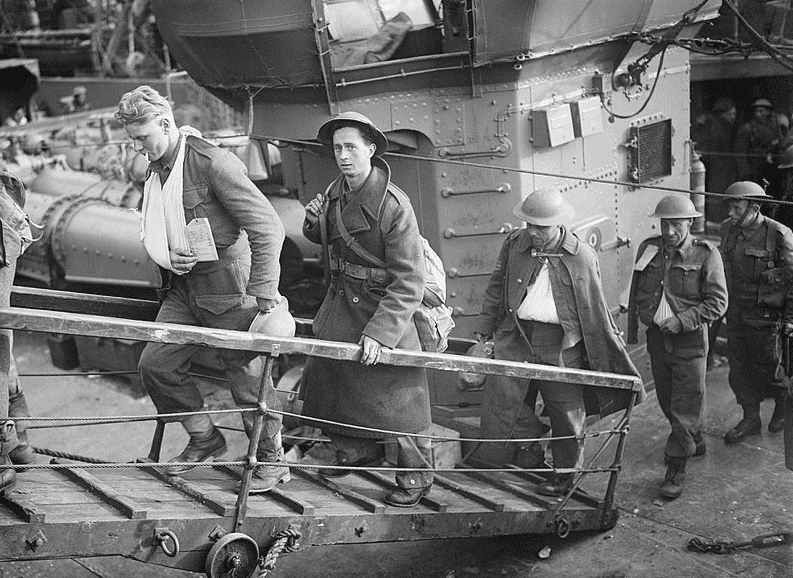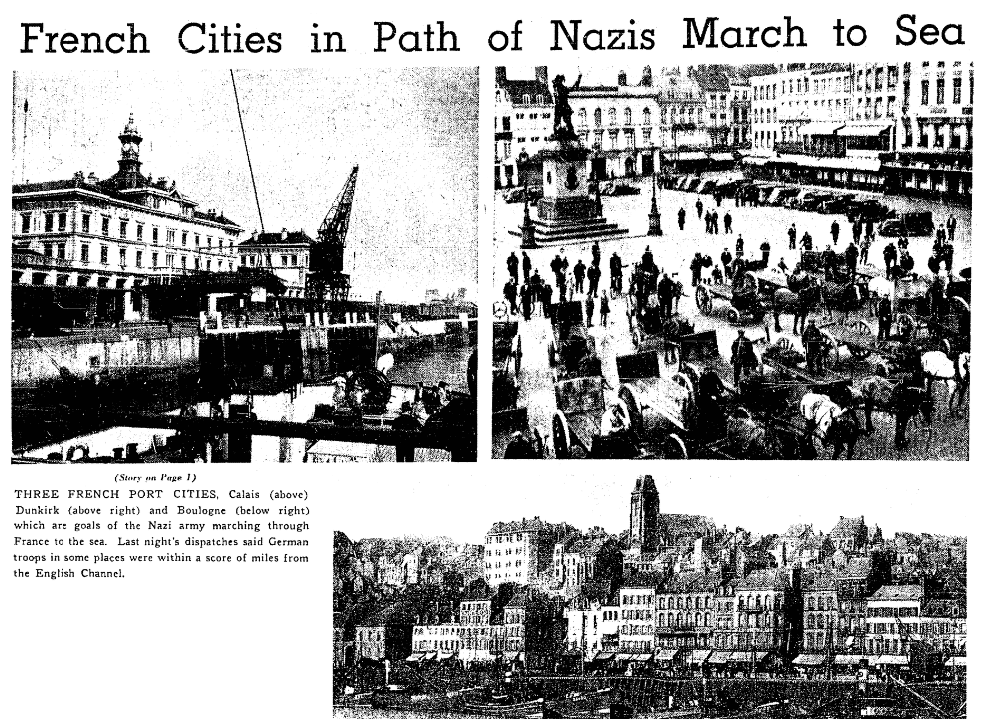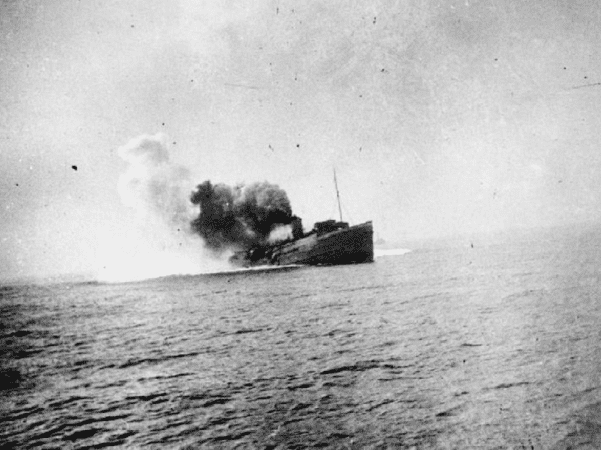Introduction: In this article, inspired by the current movie, Gena Philibert-Ortega searches old newspapers to learn more about the remarkable rescue of trapped Allied troops at Dunkirk during World War II. Gena is a genealogist and author of the book “From the Family Kitchen.”
If you have had the chance to see the movie Dunkirk, directed by Christopher Nolan, you might have been amazed at the remarkable bravery of the civilians who manned their “little ships” in order to help rescue allied soldiers trapped at Dunkirk, on the coast of France, as the German army was closing in. This World War II rescue, known as the “miracle of Dunkirk,” is an example of everyday people doing extraordinary acts.

Battle of Dunkirk
The German military launched an attack on Belgium, Holland, and Luxemburg on 10 May 1940. Five days later the German forces entered France. As they continued their advance, powered by “superior airpower, a more unified command and highly mobile armored forces, they trapped the Allies near the sea at Dunkirk.”

By May 21, the Germans had trapped the British soldiers (the “British Expeditionary Force”), along with Belgian and French forces, on the northern French coast near the port town of Dunkirk. The German military had been unstoppable, and the complete destruction of the allied forces seemed inevitable.
But then the almost unthinkable happened: on May 23 Adolf Hitler halted the attack by the German army, ordering the Luftwaffe (German air force) to finish off the allies. On May 26 the British put Operation Dynamo, the evacuation of allied forces in Dunkirk back to England, into operation.(1)
Operation Dynamo utilized civilian vessels to cross the English Channel to Dunkirk and help with the evacuation of the allied soldiers trapped there. Why use civilian recreational water craft, merchant ships and fishing boats rather than rely exclusively on military ships? For one thing, the emergency was so dire that all possible help was needed. For another, civilian vessels were better able to navigate the shallow waters near the coast than Navy ships. Piloted by civilians and military personnel, approximately 1000 ships, 700 of which were civilian craft, evacuated 198,000 British and 140,000 French and Belgian soldiers from 26 May-4 June 1940. Obviously, such a dangerous venture was not without risk: 240 ships/vessels and 84 British planes were lost during the evacuation.(2)
The Titanic Connection
The remarkable rescue at Dunkirk was reenacted 25 years later to celebrate the amazing heroism of the little ships. The newspaper article below reported of the reenactment:
“Pleasure yachts, fishing smacks, river craft and lifeboats, some 60 ships in all of the flotilla that brought out the beleaguered army, will chug across the 30 miles of water…”
At that event a very special boat joined in, Sundowner, which was owned and piloted by Charles H. Lightoller.
During the evacuation of Dunkirk in 1940, Sundowner was piloted by C. H. Lightoller, who along with his teenaged son and a 16-year-old Sea Scout, set course for Dunkirk without aid of a naval escort. His eagerness to help evacuate the soldiers to safety was motivated by the knowledge that his son was at Dunkirk awaiting rescue with the men in his unit.
Lightoller knew tragedy firsthand, as this was not his first ocean rescue. Not only had Lightoller served during World War I but he was the highest-ranking officer to survive the sinking of the Titanic.
Lightoller’s wife was interviewed for this newspaper article and remarked that one time prior to Dunkirk the family had 19 people on board Sundowner and it felt like it was “packed.” During the Dunkirk evacuation, Lightoller boarded 122 soldiers on Sundowner and returned them to England safely!
To learn more about the rescue at Dunkirk as reported at the time it happened, see GenealogyBank’s Historical Newspaper Archives. Conducting a search on the year 1940 will provide you with reports of the battle and the aftermath. For those who have watched the Christopher Nolan movie Dunkirk, you may also want to read the book Dunkirk: The History Behind the Major Motion Picture by Joshua Levine.
Note: An online collection of newspapers, such as GenealogyBank’s Historical Newspaper Archives, is not only a great way to learn about the lives of your ancestors – the old newspaper articles also help you understand American history and the times your ancestors lived in, and the news they talked about and read in their local papers. Have you been able to research your family’s involvement in World War II? Please share your stories with us in the comments section.
__________________
(1) “Dunkirk Evacuation Ends,” History (http://www.history.com/this-day-in-history/dunkirk-evacuation-ends: accessed 31 August 2017).
(2) Dunkirk Evacuation,” Encyclopedia Britannica (https://www.britannica.com/event/Dunkirk-evacuation : accessed 1 September 2017).
